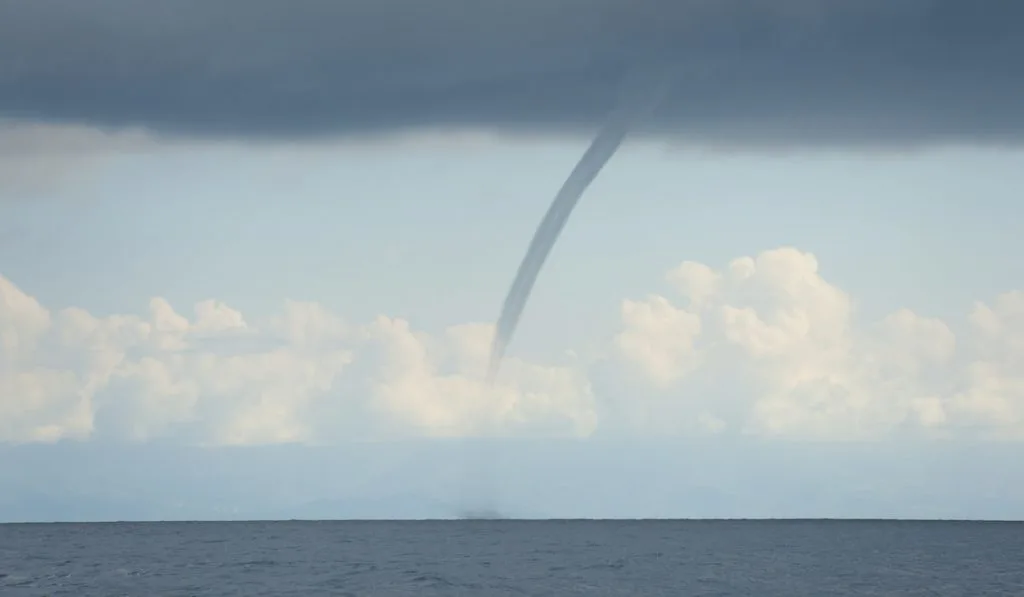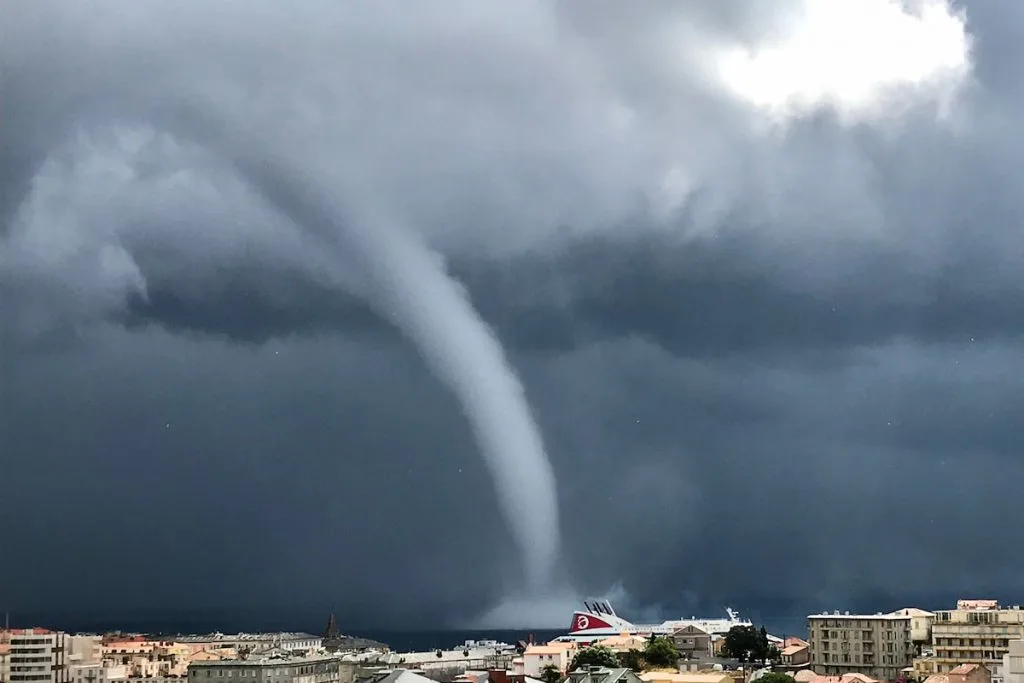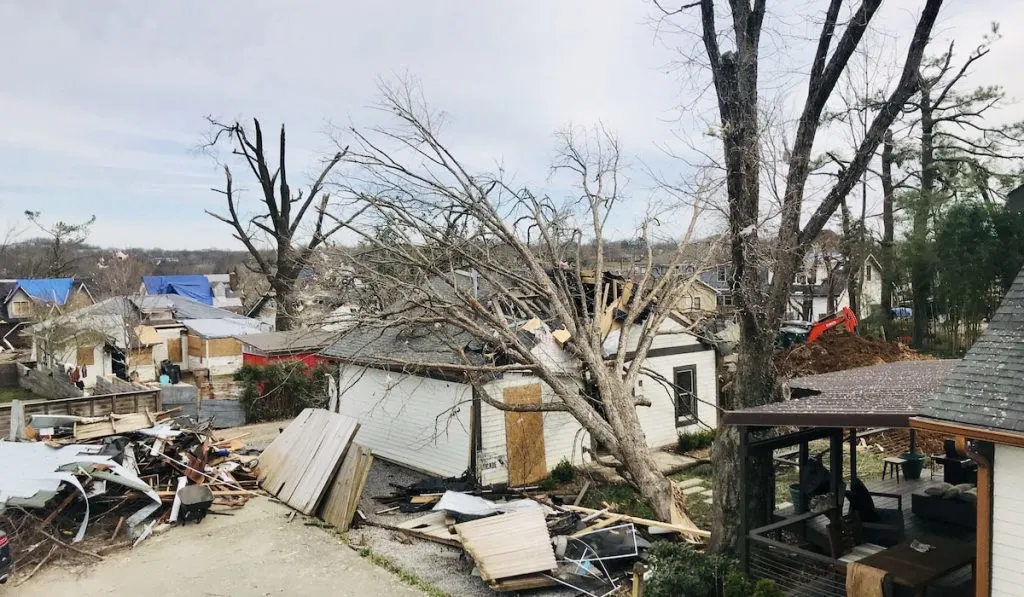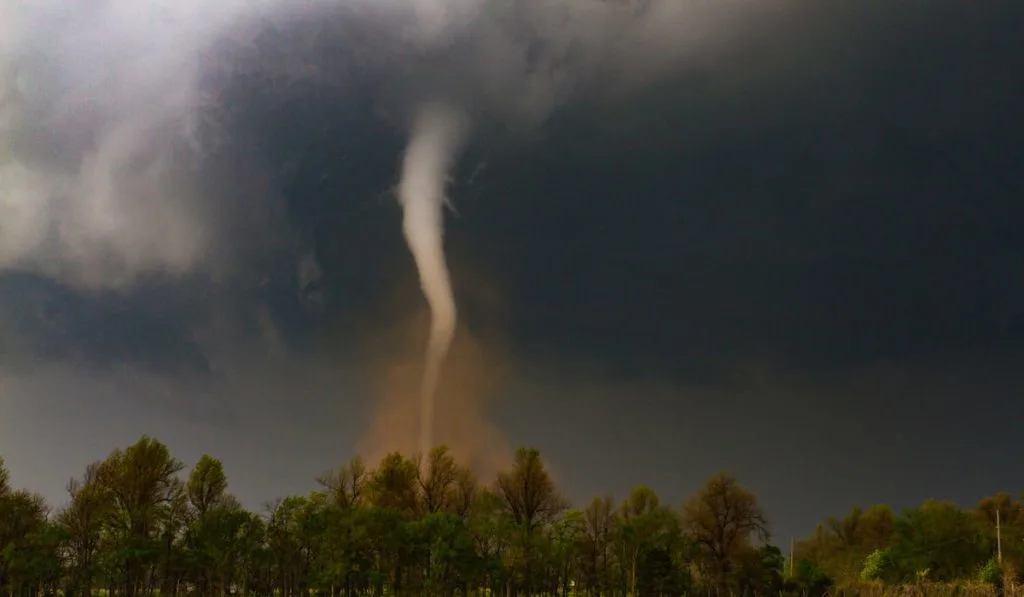The United States gets more tornadoes than the rest of the world combined. On average, the US experiences 4 times as many tornadoes as the rest of the world. Then in the US, the central and southern states have the highest rates of tornado occurrences.
You might be wondering that since Florida is a southern state, does it get tornado too? Well, let us see.
Does Florida get tornadoes?
Florida is one of the states with the highest tornado rate in the United States. Luckily, the tornadoes that occur in Florida are usually not the strong ones.

Of course, this does not mean strong tornadoes do not happen in Florida. It only means they are relatively uncommon.
You probably want to get more details about tornadoes in Florida. Well, we have got your back on this. In the rest of this article, we shed more light on the intricacies of tornadoes in Florida.
What Months Are Tornado Season in Florida?
On average, in the United States, the months of April, May, and June are peak tornado months. These are the times when the worst tornadoes happen.
However, in Florida, tornadoes can happen at any time and in any month. But they occur more commonly in spring and summer.
In spring, tornadoes typically happen in February, March, April, and May. These spring tornadoes are usually more intense and violent than those that show up in summer.
The violent spring tornadoes may also show up in winter – between October and January but they are less probable.
In summer, tornadoes may occur from June to September. Summer tornadoes in Florida typically occur along regions with powerful sea breeze fronts.
Interestingly, in Florida, there is pretty much no difference in the likelihood of a tornado happening in the day or at night.

How Many Tornadoes Have Hit Florida?
In our search, we did not find the total number of tornadoes that have hit Florida. It might even be impossible to have an accurate estimate of that.
However, we found data on the number of tornadoes that have hit Florida since 1950. From 1950 to 2020, almost 3500 tornadoes (3,482 tornadoes) have hit Florida.
That is almost 3500 tornadoes in 70 years or approximately 50 tornadoes per year.
Over this same period, 171 people died directly from the effects of the tornadoes. However, 1 person died of causes not directly related to the tornadoes.
Over 3,300 people got injured as a result of the tornado. Also, over 1.7 billion dollars worth of property was damaged by those tornadoes.
Places in Florida With Highest Tornado Rate
As mentioned already, Florida has a tornado density of 12.2 tornadoes per 10,00 square miles. The Western Panhandle around Orlando, some regions of the Atlantic Coast, and the coast between Tampa Bay and Fort Myers have had some of the highest tornado frequency in Florida.

Where Does Florida Rank in Tornadoes?
Going by the data from the National Oceanic and Atmospheric Administration (NOAA), Florida is third. The data in reference is the average number of tornadoes per year in each state between 1991 and 2010.
Within the said period, Texas had an average of 155 tornadoes per year. Kansas came in second with 96 per year, while Florida averaged 66 per year.
However, if you consider the number of tornadoes per square mile, then Florida is number one. The sunshine state averages 12.2 tornadoes per 10,000 square miles. Kansas comes in second with 11.7 tornadoes per 10,000 square miles.
So, where Florida ranks in tornadoes depends on the metric you are considering. But one thing is for sure, Florida is one of the states with the highest tornado rates.
Deadliest Tornado Event Ever in Florida
The deadliest tornado event ever in the history of Florida is the Kissimmee tornado outbreak of 1998. This storm occurred on February 22nd and 23rd, 1998. It killed 42 and left up to 260 people injured.
This tornado event featured multiple tornadoes, up to 10 of them. Some of them were rated F3, the third strongest tornado on the Fujita scale.
Strongest Tornado Ever in Florida
The deadliest tornado event in Florida history happened in 1998. But the strongest tornadoes hit the state years before that.
In April 1958 and April 1966, Florida experienced tornadoes rated F4, the second most violent on the Fujita scale. Those 2 tornadoes are the strongest ever in Florida.
What State Has the Most Tornadoes?
Unarguably, Texas has the most tornadoes of any state in the United States. From 1950 to 2020, Texas experienced 9430 tornadoes. That is an average of 134 tornadoes every year for 70 years.
Interestingly, Texas’s tornado density is not so high. The state ranks 11th for tornado density, with an average of 5.7 tornadoes per 10,000 square miles. This is so because Texas is the largest state in the US mainland.

What State Has the Fewest Tornadoes?
Alaska is said to be the state with the fewest tornadoes. In fact, the last tornado in Alaska happened in August 2005 – 16 years ago.
Records show that there have only been 4 tornadoes in Alaska since 1950. So, if you are looking to go to a place where tornadoes rarely occur, go to Alaska.
Besides having the fewest tornadoes, Alaska also has one of the lowest tornado densities. Being the largest state in the US and the one with the least number of tornadoes, this is not surprising. The tornado density of Alaska is estimated to be 1 tornado per 142,595 square miles.
Which State Has the Worst Tornadoes?
When it comes to violent tornadoes, Oklahoma tops the chart. Since 1950, Oklahoma has experienced 65 strong tornadoes. Of these 65, seven were F5 rated, the highest rating on the Fujita scale.
Texas comes in second with 52 strong tornadoes since 1950, while Iowa and Kansas come in third and fourth, respectively. As we said earlier, Florida rarely gets hit by strong tornadoes.
Conclusion
Virtually all the states in the United States get tornadoes. Like them, Florida gets tornadoes too. Florida has one of the highest rates of tornadoes and the highest tornado density in the US. However, it does not commonly get hit by the strong ones.
Resources
- https://www.businessinsider.com/tornadoes-more-us-than-anywhere-else-world-2019-5?IR=T
- https://www.theatlantic.com/science/archive/2016/02/tornadoes-united-states/470958/
- https://fsu.digital.flvc.org/islandora/object/fsu:653500/datastream/PDF/view
- https://weather.com/safety/tornado/news/2020-03-25-most-dangerous-peak-tornado-months-us-april-may-june
- http://www.tornadoproject.com/safety/klrtmnth.htm
- https://data.tallahassee.com/tornado-archive/
- https://www.ncdc.noaa.gov/climate-information/extreme-events/us-tornado-climatology
- https://www.axios.com/extreme-weather-tornadoes-states-hit-8dd6bbd4-cc10-4aff-87a2-55b2dbe4107b.html
- https://www.sun-sentinel.com/news/weather/fl-ne-florida-tornadoes-2020-20201230-ft2q2hjxordsrc3tu72omkwdmy-story.html
- https://data.elpasotimes.com/tornado-archive/
- https://www.tornadoalleyarmor.com/locations/dallas/texas-tornado-facts
- https://texasalmanac.com/topics/environment/texas-tornado-capital
- https://wgntv.com/weather/weather-blog/what-state-in-this-country-has-the-fewest-tornadoes
- https://www.ustornadoes.com/2013/06/26/u-s-tornadoes-that-occur-outside-the-u-s-the-continental-u-s-that-is/
- http://www.spc.noaa.gov/publications/mccarthy/torn1998.htm
- https://www.orlandosentinel.com/news/os-ae-floridas-deadliest-tornadoes-20190222-story.html
- https://weather.com/storms/tornado/news/2018-05-01-violent-tornado-states
- https://www.thetravel.com/usa-cities-tornado/

